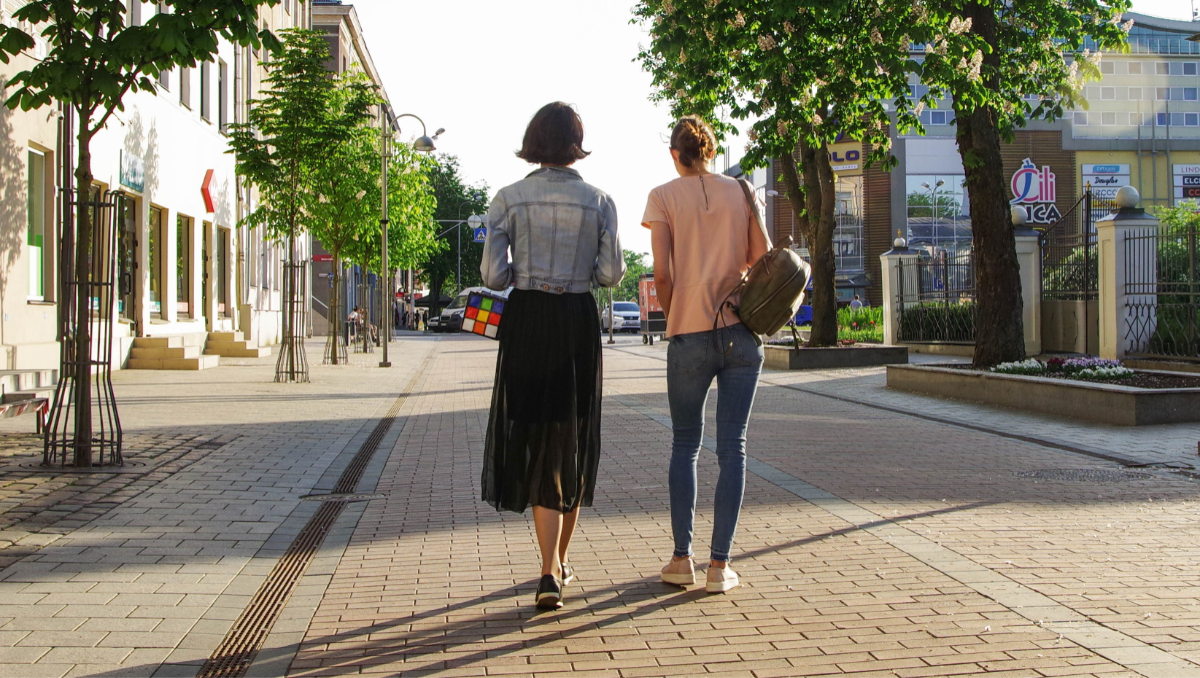Humans of New York went to Europe to see the refugee crisis firsthand. The photos are striking.
They're fleeing violence to an uncertain future.
This 76-year-old Greek baker has a new routine.
Every morning, Dionysis Arvanitakis asks his workers to make an extra 200 pounds of bread and pastries.
Photo by Brandon Stanton/Humans of New York, used with permission.
He then heads down to the port in his home of Kos, a Greek island in the Aegean Sea where an estimated 200,000 refugees have landed this year after fleeing conflicts in Iraq, Syria, and Afghanistan, among other places. He passes out the loaves of bread to hungry migrants — a warm welcome for the often-weary travelers.
This is one of roughly a dozen stories captured by Humans of New York, a photo project that offers a glimpse into a person's life.
The photographer behind the effort, Brandon Stanton, was on the road in Europe, listening to the experiences of refugees and the people who have greeted them.
Here are some of the stories he's heard since launching the 10-day project on Sept. 25:
1. A baker who knows what it's like to be a migrant
So what motivates a person to devote their time, energy, and money to helping newcomers? For Arvanitakis, it's because he knows what it's like to be one.
He moved from Greece to Australia as a teenager and ended up sleeping on the street. His thoughts on the crisis, via Humans of New York:
"My father was a farmer and we had eight siblings. I went to Australia when I was fifteen because my family didn't have enough to eat. I was on a boat for forty days. When I got there, I couldn't find a job, I couldn't speak English, and I had to sleep on the street. I know what it's like. So everyday I drive the van to the port and hand out bread to the refugees. My son is my business partner. He says, 'Baba, please. It's fine to help. But not every day.' But I still go every day because I know what it feels like to have nothing."
2. Feeling grateful for a small gift
This group photographed in Lesbos, another Greek island in the Aegean (also written as Lesvos), appeared to have little to ease their journey to Europe but took comfort in a gift from a priest.
"Everyone here has been very nice to us. When we got to the beach, there were people there who gave us food and a hug. A priest even gave us this carpet to pray on. He told us: 'We have the same God.'"
Photo by Brandon Stanton/Humans of New York, used with permission.
3. A grief-stricken woman who lost her husband
She and her husband boarded a boat jam-packed with people — so overloaded that the luggage had to be thrown overboard. When it began to sink, her husband gave his life jacket to a woman, she said. She was later rescued; he wasn't found.
“My husband and I sold everything we had to afford the journey. We worked 15 hours a day in Turkey until we had enough money to leave. The smuggler put 152 of us on a boat. Once we saw the boat, many of us wanted to go back, but he told us that anyone who turned back would not get a refund. We had no choice. Both the lower compartment and the deck were filled with people. Waves began to come into the boat so the captain told everyone to throw their baggage into the sea. In the ocean we hit a rock, but the captain told us not to worry. Water began to come into the boat, but again he told us not to worry. We were in the lower compartment and it began to fill with water. It was too tight to move. Everyone began to scream. We were the last ones to get out alive. My husband pulled me out of the window. In the ocean, he took off his life jacket and gave it to a woman. We swam for as long as possible. After several hours he told me he that he was too tired to swim and that he was going to float on his back and rest. It was so dark we could not see. The waves were high. I could hear him calling me but he got further and further away. Eventually a boat found me. They never found my husband."
Photo by Brandon Stanton/Humans of New York, used with permission.
4. Families seeking refuge
Before they left home, this mother told her son that nearby explosions were far away. Then tragedy struck.
"They fired rockets from a mountain near our house. They were very loud, and every time he heard them, he'd run into his room and close the door. We'd tell him fake stories. We'd tell him that there was nothing to worry about, and that the rockets were far away and they would never reach us. Then one day after school he was waiting in a line of school buses. And a rocket hit the bus in front of him. Four of his friends were killed."
Photo by Brandon Stanton/Humans of New York, used with permission.
5. A vital effort from volunteers
This family has aided thousands of migrants as they've arrived in Greece, handing out sandwiches, juice, and water. Even their son has noticed how serious the crisis has become.
“In the past four months alone, we've had twelve thousand refugees stop here. We know because we've counted the sandwiches that we've handed out. They show up battered and beaten. We set up this rest area along the road to hand out sandwiches, juice, and water. One night we had one thousand people here. You could see nothing but heads. We're not professionals, just volunteers. The families break our heart the most. They show up with no money, no papers, and no hotels. Sometimes it's raining and they have nothing but cardboard over their heads. They have nothing for their children, and we know how hard it is to raise kids even in standard conditions. Our son hasn't seen very much of us recently. Even when we are together, the phone is always ringing and we are absent in mind. Recently he asked if we could build a big boat and send the refugees somewhere that there is no war."
Photo by Brandon Stanton/Humans of New York, used with permission.
6. A father desperate to provide a better future for his daughter
"She hasn't known many happy moments," he told Stanton. The man recalled a powerful scene as the family boarded a small boat to Greece.
"I wish I could have done more for her. Her life has been nothing but struggle. She hasn't known many happy moments. She never had a chance to taste childhood. When we were getting on the plastic boat, I heard her say something that broke my heart. She saw her mother being crushed by the crowd, and she screamed: 'Please don't kill my mother! Kill me instead!'"
Photo by Brandon Stanton/Humans of New York, used with permission.
7. A traumatized young girl
Stanton approached a young girl and asked to speak to her mother. The request seemed simple enough, but it triggered a look he described as "uncontrollable fear." A life on the run had conditioned her to expect the worst.
"The extent to which refugee children have been conditioned by their environment is heartbreaking. We wanted permission to take this young girl's photograph, so we asked if her mother was nearby. Her eyes filled with the most uncontrollable fear that I've ever seen in a child. 'Why do you want my mother?' she asked. Later, her parents told us how the family had crouched in the woods while soldiers ransacked their house in Syria. More recently they'd been chased through the woods by Turkish police. After we'd spent a few minutes talking with her parents, she returned to being a child and could not stop hugging us, and laughing, and saying 'I love you so much.' But I went to sleep that night remembering the terror on her face when we first asked to speak to her mother."
Photo by Brandon Stanton/Humans of New York, used with permission.
8. A man who wants to see his brother healthy again
After a sniper shot his brother, he thought the injuries would be fatal, the man told Stanton. His brother survived but needs medical attention, something he's hoping to find in Germany.
"A friend called me at work and told me that a sniper had shot my youngest brother. I rushed to the clinic and he was lying there with a bandage on his head. I unwrapped the bandage to help treat the wound with alcohol, and small pieces of brain were stuck to it. The doctor told me: 'Unless you get him to Damascus, he will die.' I panicked. The road to Damascus went straight through Raqqa and was very dangerous. It took ten hours, because we could only take back roads and we had to drive very far out of the way. My brother was in the back seat, and after a very short time he started to vomit bile. Water was pouring from his eyes. I didn't know what to do. I was so scared. I thought for sure he was dying. But somehow I got him to the hospital. He's paralyzed now and his speech is slow. His memory is OK. He can remember old things. He needs an operation in his eye. We used to do everything together, and now he can't do anything. He can only move his hand. I'm trying to get him to Germany because I hear that maybe the doctors there can help him."
Photo by Brandon Stanton/Humans of New York, used with permission.
9. Finding a friend when you need one most
This young man was taken under the wing of a baker in Austria (these bakers have big hearts!) who helped him settle there. He studied German intensely to help obtain legal immigration status in the country.
"After one month, I arrived in Austria. The first day I was there, I walked into a bakery and met a man named Fritz Hummel. He told me that forty years ago he had visited Syria and he'd been treated well. So he gave me clothes, food, everything. He became like a father to me. He took me to the Rotary Club and introduced me to the entire group. He told them my story and asked: 'How can we help him?' I found a church, and they gave me a place to live. Right away I committed myself to learning the language. I practiced German for 17 hours a day. I read children's stories all day long. I watched television. I tried to meet as many Austrians as possible. After seven months, it was time to meet with a judge to determine my status. I could speak so well at this point, that I asked the judge if we could conduct the interview in German. He couldn't believe it. He was so impressed that I'd already learned German, that he interviewed me for only ten minutes. Then he pointed at my Syrian ID card and said: 'Muhammad, you will never need this again. You are now an Austrian!'"
Photo by Brandon Stanton/Humans of New York, used with permission.
Sometimes the political debate over immigration can muffle the human stories.
The scale of the refugee crisis can seem overwhelming. According to The New York Times, six countries — Germany, Austria, Hungary, Sweden, the Netherlands, and Finland — expect 1.3 million asylum applications by the end of the year.
But these stories help us remember that behind each of these numbers is a person, someone willing to risk their life for a better future.








 Women walking down a street.Image via Canva Photos.
Women walking down a street.Image via Canva Photos.  Woman aware of her surroundings in a parking garage. Image via Canva Photos.
Woman aware of her surroundings in a parking garage. Image via Canva Photos.

 A 1966 Framus Strato Gold De Luxe 12-string electric guitar.via Julien's Auctions (used with permission)
A 1966 Framus Strato Gold De Luxe 12-string electric guitar.via Julien's Auctions (used with permission) A Hammarlund HQ-One Forty Five model 145C Ham radio shortwave receiver.via Julien's Auctions (used with permission)
A Hammarlund HQ-One Forty Five model 145C Ham radio shortwave receiver.via Julien's Auctions (used with permission)